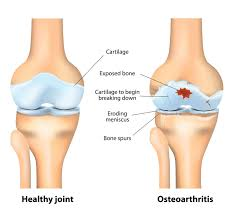After successfully losing one pound weekly for several months, an obese client at the clinic has not lost any weight for the last month. What should the nurse do first?
Review the diet and exercise guidelines with the client.
Ask the client whether there have been any changes in diet or exercise patterns.
Recommend reducing calorie intake even more.
Instruct the client to record weights weekly.
The Correct Answer is B
Choice A reason:
Reviewing the diet and exercise guidelines with the client is an important step, but it may not address the immediate issue of the weight loss plateau. It's essential to first understand if the client has adhered to the guidelines before reviewing them.
Choice B reason:
Asking the client about any changes in diet or exercise patterns is the first step in identifying potential causes for the weight loss plateau. Changes in lifestyle, stress levels, eating habits, or physical activity can all contribute to a halt in weight loss. Understanding these factors can help the nurse tailor further advice and support.
Choice C reason:
Recommending a further reduction in calorie intake might not be the best initial approach. It's important to ensure that the client is not already consuming too few calories, which can slow metabolism and hinder weight loss. Moreover, drastic calorie reduction can be unsustainable and lead to nutritional deficiencies.
Choice D reason:
Instructing the client to record weights weekly is a useful tool for monitoring progress, but it does not address the current issue of the weight loss plateau. It's a supportive action that should follow after understanding and addressing the reasons behind the plateau.
Nursing Test Bank
Naxlex Comprehensive Predictor Exams
Related Questions
Correct Answer is C
Explanation
Choice A Reason
Limit setting may be helpful for a client who displays hypervigilance and refuses to attend unit activities, as it can provide clear expectations and help reduce anxiety. However, this behavior does not pose an immediate risk to the safety of others, making limit setting less essential compared to behaviors that could lead to harm.
Choice B Reason
While being flirtatious toward staff members may be inappropriate and require intervention, it is typically addressed through professional boundaries rather than limit setting. Limit setting in this context would involve clarifying acceptable behaviors within the therapeutic relationship.
Choice C Reason
Urging another client to commit violence is a behavior that necessitates immediate limit setting. This behavior poses a direct threat to the safety of others and disrupts the therapeutic environment. Limit setting here would involve immediate intervention to prevent harm and to maintain a safe environment for all clients.
Choice D Reason
A client who clings to the nurse and seeks advice on inconsequential matters may benefit from limit setting to encourage independence and appropriate use of staff time. However, this behavior is not as disruptive or dangerous as inciting violence, making it a lower priority for limit setting.
Correct Answer is D
Explanation
Choice A reason:
Ulnar deviation, which is the angling of the fingers towards the little finger side of the hand, is more commonly associated with rheumatoid arthritis, not osteoarthritis. Osteoarthritis typically affects the joint's cartilage, leading to pain and stiffness, rather than causing the fingers to deviate.
Choice B reason:
Symmetric joint involvement is also more characteristic of rheumatoid arthritis. Osteoarthritis usually affects joints asymmetrically, meaning it's more likely to affect one side of the body or one particular joint at a time.
Choice C reason:
Weight loss is not a direct manifestation of osteoarthritis. In fact, being overweight is a risk factor for developing osteoarthritis due to the increased stress on weight-bearing joints. However, weight management through diet and exercise can be part of the treatment plan for osteoarthritis to alleviate symptoms and improve joint function.
Choice D reason:
Joint stiffness and limited range of motion are hallmark manifestations of osteoarthritis. These symptoms result from the breakdown of cartilage within the joints, which leads to pain and difficulty moving the affected joint. Stiffness is often most noticeable upon waking or after periods of inactivity, and the range of motion may decrease as the condition progresses.

Whether you are a student looking to ace your exams or a practicing nurse seeking to enhance your expertise , our nursing education contents will empower you with the confidence and competence to make a difference in the lives of patients and become a respected leader in the healthcare field.
Visit Naxlex, invest in your future and unlock endless possibilities with our unparalleled nursing education contents today
Report Wrong Answer on the Current Question
Do you disagree with the answer? If yes, what is your expected answer? Explain.
Kindly be descriptive with the issue you are facing.
